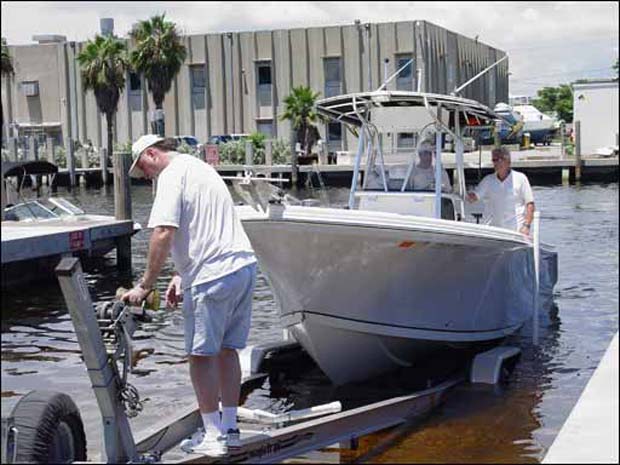 Tips for loading onto your trailer in a crosswind or current
Tips for loading onto your trailer in a crosswind or current
Getting a boat back on a trailer in a howling wind or sweeping current is one of the least fun things to do. But as some saltwater ramps are affected by tidal currents and many riverside ramps by the steady flow of water downstream, it’s an issue that affects trailer boaters. Here are a few tips for loading onto your trailer in a crosswind or current.
High and Dry
First and foremost, sink the bunks or rollers the minimal amount necessary to float the bow of your boat onto the back end. Make sure the tops of the bunks or rollers are out of the water; they’ll act as brakes to keep your bow from overshooting. If it is legal to use your engine to load at the launch ramp — in many places it’s not — let your horsepower do the work. Use the thrust to push forward, and let the bunks align your boat in place and hold the hull on the trailer.
Help from Your Friends
Without the aid of power, you’ll have to rely on your boat’s momentum. Sometimes the wind or current makes doing this without assistance a near impossibility. Before loading, unfurl the trailer strap or cable as far as it will go and hang it off the end of your upwind trailer guide. Quickly clip it and have a friend winch it up to center the boat.
If the aft end keeps swinging, affix extra-long bow and stern lines and have a friend handle them like reins from the launch ramp dock or on shore. He can keep the boat centered while the winch does the work.
And if any of these don’t work on the first try, keep calm, as they say, and carry on. Back off and try the approach again.
Play the Angles
As mentioned, in many areas it’s illegal to power onto your trailer at the ramp. Then what? There are other options. If there’s enough space to either side and enough water at the ramp, back the trailer in at a slight angle to the down-current (or wind) side so you can angle your boat onto the trailer with the bow facing slightly up-current. This will require some finesse because you’ll have to kill the engine at just the right moment to coast it on, but angling will give you more control and better allow you to load your boat onto the trailer before the current catches and swings the stern.
If you have to back the trailer straight down the ramp, approach from down-current and keep the bow up-current — even as much as 90 degrees to the trailer — until it’s time to turn and align with the trailer. The current or wind will rapidly push the bow, so aim forward of the trailer’s centerline before straightening to quickly load up.
This is a great time to use guideposts to know where the outer edges are for alignment on approach.
(Don’t have guides? Order aluminum add-ons from overtons.com)


